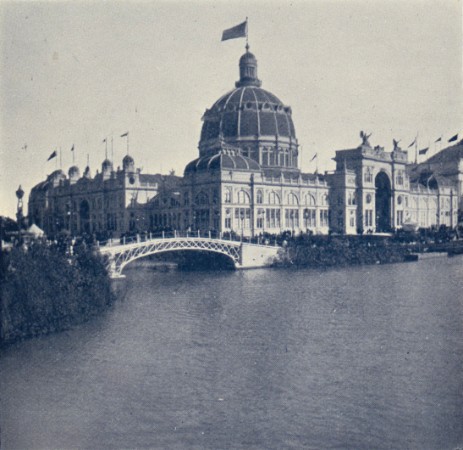Boston Camera Mfg. Co. Bull's-Eye (1892)
| Ebonite version |
| Wood version |
Leather version |
The Bull's-Eye of the Boston Camera Mfg. Co. is a true milestone in camera history. In it three innovative features were combined for the first time and the next 60 years amateur boxcameras were build according to this design. The three features are:
1. Frontroll design. In the first rollfilm boxcameras of the late 1880's the spools of film were placed behind the plane of focus. H.J. Redding of England probably was the first one to put the spools in front of the plane of focus, using the spare room in the front part of the camerabox. This way the camera could be 30% shorter, which was of importance for the amateurs who wanted to take it with them on a day out.
2. Daylight film spools. The first spools of sensitive film had no protection against the light and had to be loaded into the camera in a darkroom. At the Blair Camera Co. someone had the good idea to protect the film with a long band of black paper. Together they were rolled onto the spool (in sandwich fashion), thus preventing light to reach the sensitive film. The daylight film was a great advantage, as the photographer could load a new film into the camera whereever he was.
3. Red window. In rollfilm cameras the photographer had to know when he had advanced enough film to make a new exposure. Also he had to count exposures to know how much film (or exposures) he had left. By printing numbers on the black band of paper and providing a little window in the back of the camera, the photographer could in a simple way know both. To prevent light to fog the film the window had a red foil in it. The films of those days were not sensitive to this color.

The Bull's-Eye is an important camera, but it was no great seller. Only when George Eastman bought the Boston Camera Mfg. Co. and marketed the Bull's-Eye under the Kodak name, it became very successful.
The Boston Bull's-Eye was introduced in 1892. It became an Eastman Kodak camera in August of 1895. The camera took 12 pictures of 3.5 x 3.5 inch (9 x 9 cm) and cost $ 7 (plain wood or ebonite version) or $ 8 (wood with leather version).
In 1894 The Boston Camera Mfg. Co. published a promotion booklet with photos taken by the Bull's-Eye at the 1894 Chicago World's Fair. Here's one of the photos in the booklet.